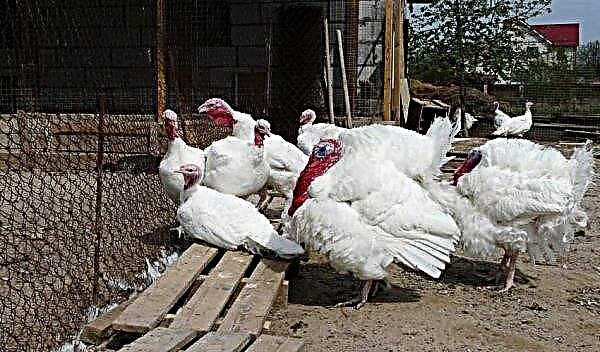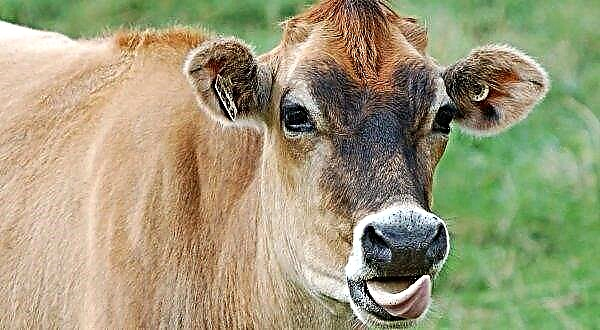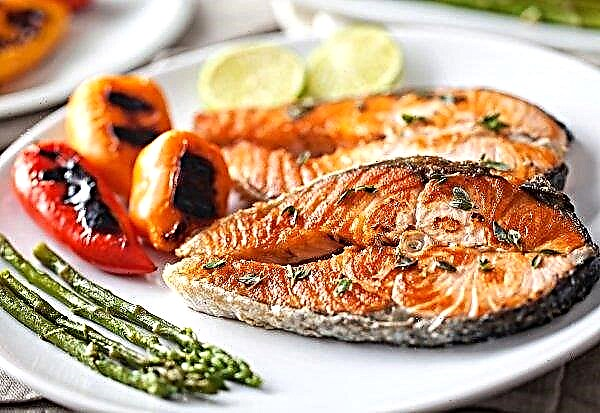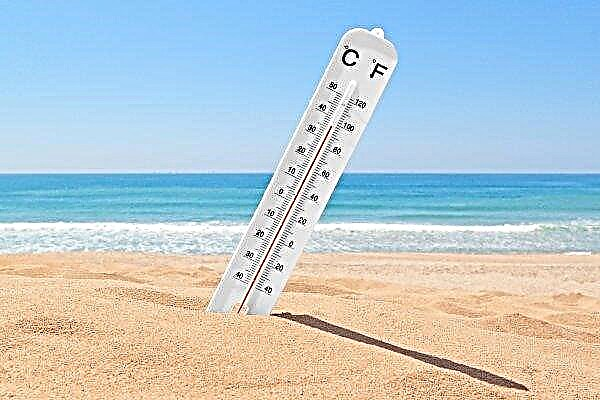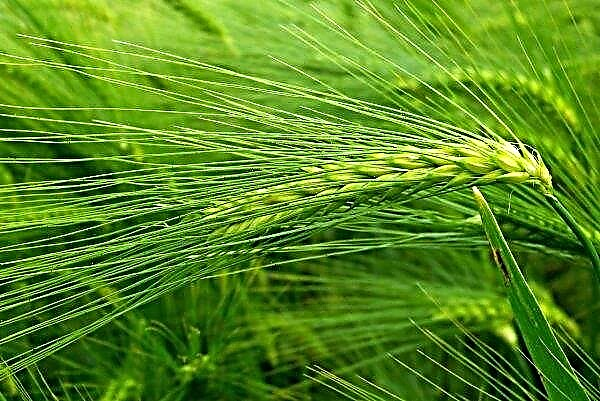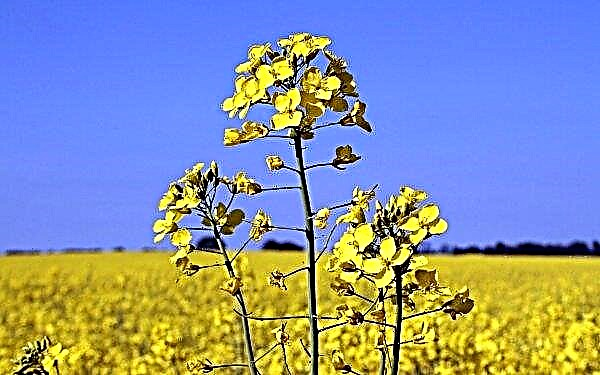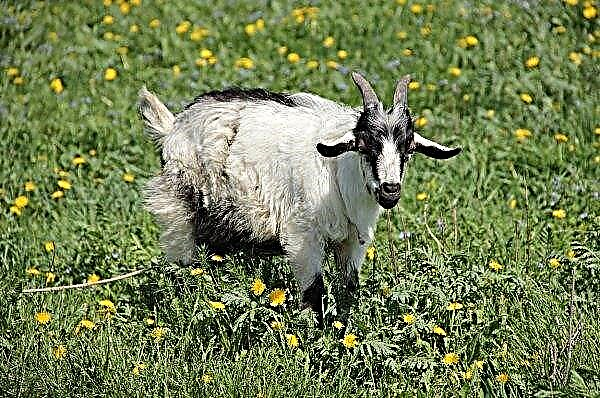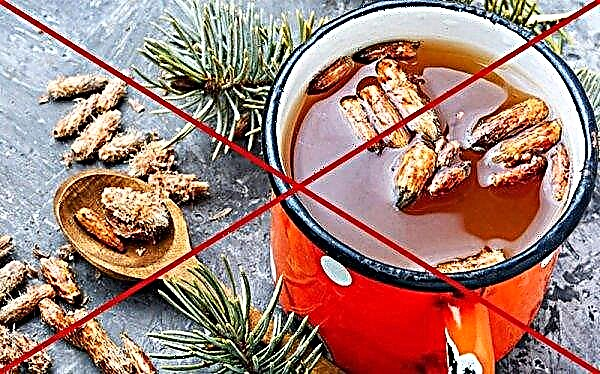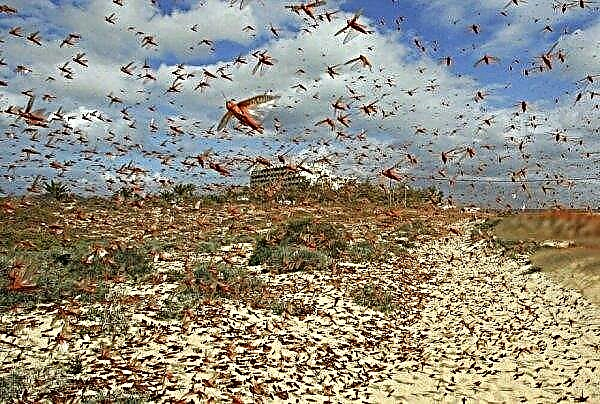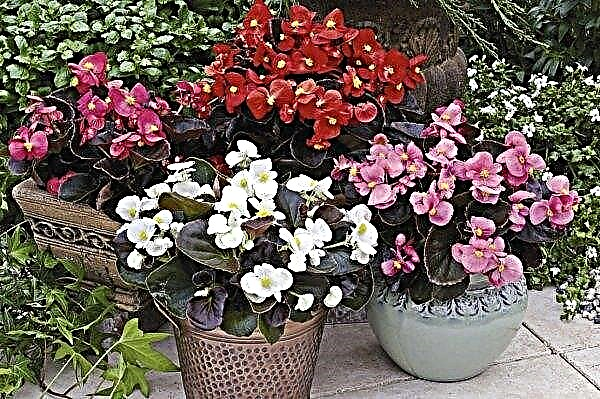Among the various varieties of apple trees, column-shaped hybrids occupy a special place. Such plants are distinguished by a rather elegant shape and small size, which helps to obtain the maximum amount of yield, with a minimum expenditure of free space on the site. One of the most popular columnar varieties is the President apple tree, which will be discussed later.
Selection history
The history of apple breeding The President began a long time ago. The first hybrids with stable traits were obtained in the mid-70s of the 20th century, thanks to scientists from the All-Russian Institute of Horticulture and Nursery (Moscow).
Varieties of the apple tree Obilnoe and Leader were chosen as the basis for the new plant. The variety is zoned relatively recently, in 2002. The recommended zone for growing the plant was the territory of the Perm, Moscow and Samara regions, as well as related climatic zones.
Variety Description and Characteristics
Over the years of hard work, the Apple Tree President has become one of the best products of Soviet selection, which many gardeners have come to love. In addition to its compact size, the plant is distinguished by shortened shoots, which affects the characteristics of the fruit, as well as the yield in general.
Adult tree height
The adult representative of the President variety is a semi-dwarf tree plant, not exceeding two meters. In most cases, the height of the average apple tree is in the range of 150–180 cm.
At the same time, the hybrid is distinguished by a rather thick, but compact crown. Its width often does not exceed 20 cm.
Fruit Description
Large fruits ripen on the plant, the average weight of which is in the range of 150–250 g. The shape of the apples is symmetrical, rounded, but the fruits are slightly flattened in the horizontal direction.
The skin color is distinguished by yellow or pale yellow shades, on top of which, at least 2/3, a delicate blush of violet-red shade appears.
The peel of the fruit is thin, but stiff enough and resistant to damage. It features a characteristic glossy shimmer. The pulp is dense and juicy, fine-grained, white. The taste of apples is rich, delicate, sour-sweet, the aroma of the fruits is pronounced distinctly.
Did you know? The world's first columnar apple tree appeared in Canada in 1964. The plant became the product of a natural mutation of the MacIntosh variety, as a result of which it lost the ability to form powerful side shoots.
Productivity
Apple tree productivity depends on growing conditions. On fertile, well-fertilized substrates, the variety produces up to 16 kg of fruit per plant. But, in most cases, the President’s apple yield is much lower, and is within 10 kg per tree.
Winter hardiness and disease resistance
The variety is characterized by increased resistance to various pests and infections, characteristic not only for the Pink family, but also directly for representatives of the genus Apple tree.
It is worth noting the increased resistance of the hybrid to frost and sudden changes in temperature. Ovary is also resistant to cold weather, so spring cooling does not affect the productivity and quality of the crop.
Fruiting frequency
The President’s apple tree bears fruit regularly, therefore fragrant fruits are harvested annually. Varieties are characterized by yield fluctuations over the years, while a sharp decrease in the number of fruits is not observed.
The apple tree blooms profusely, but for a short time, no more than 10 days, the timing of flowering depends on the climatic characteristics of the growing place and weather conditions.
Planting a Column-shaped Apple Tree President
Since the apple-tree President is notable for its compact size and shortened shoots, planting a plant requires compliance with several individual characteristics.
In addition to choosing the optimal period for planting a seedling, you should carefully approach the location where the apple tree will grow and develop.
Recommended Dates
Apple trees are planted in early spring, before leaf buds open, or in the second half of autumn, after leaf fall. Preference should be given to autumn planting.
It allows in spring to get a fully-rooted plant, ready for active growth, and also resistant to sudden changes in temperature.
Choosing the right place
In order to choose the best site for planting a President-type apple-tree, you need to consider many factors. Hybrid loves well-lit and open areas, protected from drafts and cold winds.
Also the plant does not like shadowtherefore, it is planted away from any tall vegetation (no closer than 4-5 meters).
When planting, it should be borne in mind that the plant does not tolerate the influence of constantly moist air masses, therefore, seedlings are planted only on a plain or hill, in areas with a groundwater level of at least 2.5 m. The President is not picky about the soil. The variety grows excellently in almost any soil, but the highest yields are observed only on well-fertilized sandy loam or loamy substrates. Soils should have a neutral pH value (6.5–7).
The President is not picky about the soil. The variety grows excellently in almost any soil, but the highest yields are observed only on well-fertilized sandy loam or loamy substrates. Soils should have a neutral pH value (6.5–7).
Important! If any fruit tree species previously grew on the site, after rooting out the stump must pass at least 4 years. Otherwise, in a depleted land, a young seedling will not only grow poorly, but also later bear fruiting.
Selection and preparation of planting material
Choosing a quality planting material is not easy, but it is one of the most important operations that allows you to grow a healthy and productive garden.
Therefore, when buying seedlings, you need to pay attention to plants that have the following characteristics:
- age - 1.5–2 years; seedlings have several lateral shoots;
- a moistened root system, the rhizome must be elastic;
- elastic branches and an even, strong trunk.
To avoid any problems with subsequent cultivation and care, you should refuse from:
- dry plants;
- seedlings with damage or traces of infection and pests;
- planting material, in which the root system is brittle and dry (easily breaks into pieces);
- apple trees with large leaves - this often indicates the selection of seedlings in an unfavorable phase, the rooting of such plants will be accompanied by growth inhibition and diseases.

Landing technology
The process of planting an apple tree begins with preparatory measures. First of all, approximately 2–4 weeks before the immediate date of planting a seedling, you should clean the site of all kinds of plant debris, and then dig a hole.
They plant the President variety in a fossil or row way. Such planting is best to save space on the site, and also, in the case of laying a garden of several plants to avoid the shading of neighboring apple trees.
When planting in rows, elongated holes are created on the entire surface of the plot with a depth and width of about 50 cm, with a row spacing of at least 1 m. Apple trees are planted in them at a distance of 50 cm from each other. Do this so that the plants in adjacent rows are distributed among themselves in a checkerboard pattern. Row planting allows you to more evenly distribute the plants on the site, which makes it possible to significantly increase the productivity of the apple orchard.
Do this so that the plants in adjacent rows are distributed among themselves in a checkerboard pattern. Row planting allows you to more evenly distribute the plants on the site, which makes it possible to significantly increase the productivity of the apple orchard.
However, such a technique is permissible only in the case of laying a garden with at least 10 plants.
With a fossa landing, holes 80 cm deep and one meter in diameter are prepared. They are arranged in a random order around the site, but no closer than 50 cm from each other.
Check out

If the soil in the garden is poor, compost or humus (3-5 kg / plant) must be placed on the bottom of each hole. Feeding can be enriched with wood ash - 400 g / plant, as well as superphosphate (90 g / plant) and potassium nitrate (70 g / plant).
Fresh manure is not suitable, it causes inhibition of seedlings, and also provokes rotting of the root system. After that, the site must be well irrigated with water.
A seedling is subjected to preparation - for this, its root system is soaked before planting in warm water and kept at room temperature for 12 hours. Next, the rhizome is treated with a liquid clay solution. The apple tree is planted on a dry and sunny day, the root system is placed in a hole, if necessary, straightened, and then covered with a mixture of garden soil and humus (1: 1). After that, the site is well irrigated - for this, about 10 liters of water are poured under each plant.
The apple tree is planted on a dry and sunny day, the root system is placed in a hole, if necessary, straightened, and then covered with a mixture of garden soil and humus (1: 1). After that, the site is well irrigated - for this, about 10 liters of water are poured under each plant.
Important! The President planted apple trees in groups - at least 2-3 seedlings should grow on a nearby site.
Features of further care
In addition to skilled planting, the apple tree President requires quality care. That is why, in addition to watering and feeding, the tree needs periodic pruning, as well as protection against infections and pests.
Watering and feeding
Column-shaped varieties of apple trees are considered moisture-loving plants. Their root system quite actively absorbs ground moisture, so when growing such varieties on the site, you must definitely create regular watering.
Irrigation of the upper soil horizon (10-15 cm) is done every 2-3 days, deeper watering is carried out at least 1 time per month. Depending on the type of soil, 10 to 30 liters of water per plant are used. The first feeding of young plants is carried out after a year.
The first feeding of young plants is carried out after a year.
For one season, at least 4 top dressings are required, which are done according to the following scheme:
- before flowering - 5 buckets of humus, 400-500 g of urea, 30 g of nitroammophoska and 20 g of potassium nitrate;
- during flowering - a mixture of 5 l of liquid manure, 2 l of bird droppings, 200 g of urea, 100 g of superphosphate and 50 g of potassium sulfate (per 10 l of water);
- in mid-June and before wintering - a solution of 2 tbsp. l superphosphate and 1 tbsp. potassium chloride (per 10 liters of water).
Preventative spraying
Apple-tree President is considered a resistant hybrid to characteristic diseases and all kinds of pests, but the variety still needs periodic treatments. This helps to avoid low productivity of the apple tree, as well as reducing the quality of the crop.
Processing is carried out three times per season, the best time for this is considered to be early spring (before the leaves are blooming), the period of fruit set and the phase of active ripening of the crop (approximately 30–40 days before harvesting). Spraying with the following drugs helps to cope with pests:
Spraying with the following drugs helps to cope with pests:
- "Bifentrin";
- Imidacloprid
- Lufenuron
- "Thiacloprid";
- Cypermethrin;
- "Dimethoate."
The following fungicidal agents will help prevent infectious lesions:
- preparations: “Hom”, “Kaptan”, “Imazapir”, “Difenoconazole”, “Triadimefon”, “Chorus” or “Topaz”.
- Bordeaux liquid;
- 2% solution of copper sulfate.
Did you know? The largest apple in the world was grown in 2005 in Japan. The local farmer Chisato Iwasaki managed to get a fruit weighing 1.85 kg.
Pruning
The President is pruned annually, starting from the second year of growing a seedling. Do this in the early spring, before budding. During the procedure, sanitary cleaning and crown formation are carried out. In the first case, remove all dry, damaged or infected parts of the shoots. To form a regular crown, each young shoot is shortened into two leaf buds, which helps to obtain a compact tree of the correct columnar shape.
In the first case, remove all dry, damaged or infected parts of the shoots. To form a regular crown, each young shoot is shortened into two leaf buds, which helps to obtain a compact tree of the correct columnar shape.
After trimming, all places of the cuts are necessarily treated with crushed charcoal, which prevents infections of open tissues from being damaged.
Shelter for the winter
Shelter for the winter is one of the most important stages in the cultivation of apple trees. If the procedure is neglected, the plant has every chance of freezing out, which is especially often the main cause of death of young seedlings.
They cover the plant with dense burlap (2–4 layers), straw or hay (with a layer of at least 10 cm). Wrap the trunk, as well as shoots (if possible), after which the covering material is tightly fixed with a twine.
Further, the soil around the trunk is mulched with straw, tyrsa, sawdust, pine needles, husks, etc. The thickness of the mulch should be at least 15 cm.
Description of the rules for the collection and storage of crops
Harvest fruits from the second half of August to the first half of September. A clear sign of ripeness of apples is a characteristic rich blush on the upper integument, as well as aroma. The apples are picked by hand, placed in wooden or plastic containers. They do this as carefully as possible, because the slightest damage reduces their durability and leads to decay. Harvested crops are stored in open containers at room temperature. Under such conditions, the fruits are able to be preserved for 1–1.5 months.
They do this as carefully as possible, because the slightest damage reduces their durability and leads to decay. Harvested crops are stored in open containers at room temperature. Under such conditions, the fruits are able to be preserved for 1–1.5 months.
At temperatures from 0 to + 5 ° C and moderate humidity, apples are able to maintain freshness until mid-winter.
Apple-tree President conquered gardeners with its unpretentiousness, compactness, as well as excellent quality of fruits. That is why, this variety today is increasingly found in suburban areas.
However, to grow such an apple tree is not easy, since the plant requires periodic pruning, as well as a microclimate that excludes prolonged droughts.

